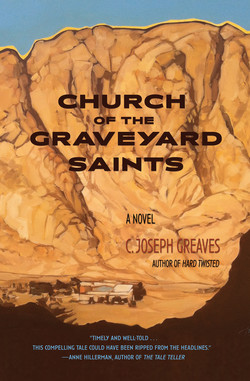Читать книгу Church of the Graveyard Saints - C. Joseph Greaves - Страница 15
Оглавление6
Arusting Ford Bronco, Creamsicle orange with a white driver’s door, pulled to the graveled shoulder along a wooded stretch two miles from the state highway. The strapping young man who alighted slung a rifle case over his shoulder. He locked his door and pocketed the keys and looked both ways before wading into the roadside brush.
His hike through the tangled bulwark of oak brush and elm was but twenty or so yards, and once to the clearing he set down the case and paced off his distance and removed four thumbtacks from his pocket. From another pocket he removed a folded page he’d torn from a magazine. He slapped the page onto the bark of a cottonwood and tacked it in place and stepped back to study the effect.
What breeze there was came from the west. Gently, like a breath. He figured it for two miles per hour. Facing it with eyelids closed he could smell the coming winter as he listened for cars on the highway.
Before returning to his rifle he climbed the bank of a low earthen dike behind the tree. The stock pond, ankle-deep when last he’d seen it, today was a dried flower arrangement of cattails and cockleburs bleached by mud and sun to the color of cold chicken gravy.
Again he listened in silence. From a treetop behind him a blackbird whistled a single mournful note. To his right, insects buzzed and jumbled. Of life there was no other sign.
He shed his coat, a faded brown Carhartt, as he strode back to the rifle. Draping it on the ground, he knelt and slid the gun from its case along with two foam earplugs and one new box of .30-30 cartridges.
He stoppered his ears and cradled the weapon in his elbow and thumbed six of the cartridges into the receiver while humming an Aerosmith tune, “Dream On,” his head nodding in time to the beat.
He stood. The distance he’d paced was a hundred yards. The breeze held steady at two, maybe two and a half. His rifle was a lever-action Marlin 336C, his scope a Weaver K4. His target was a color photograph in the upper-right quadrant of the torn magazine page, the photo depicting a smiling man in a button-down shirt with his sleeves rolled to reveal tanned forearms and a fancy gold wristwatch.
BoomchackaBoomchackaBoomchackaBoomchackaBoomchackaBoom. He squeezed off the rounds with a rapidity that bespoke either skill or anger, and when the echo of the last report had died in the trees he lowered his weapon and ejected the final casing.
After returning the rifle to its case, he unplugged his ears and stood and shrugged back into his coat. He bent once more to collect the ejected shells, counting them as he did. Shouldering the rifle this time, he re-paced the distance to the tree.
The tacks he removed with a blackened thumbnail to examine what was left of his target. The man in the photo—his dimpled smile, his fancy-ass watch—had been obliterated by a tight cluster of five bullet holes that had overlapped into one. The sixth shot—high and right by an inch—had altered the headline above the photo to read “One Man’s Quest to Save the American West.”
“Dream on,” the young man sang aloud, folding the page into his pocket and turning again toward the road.
